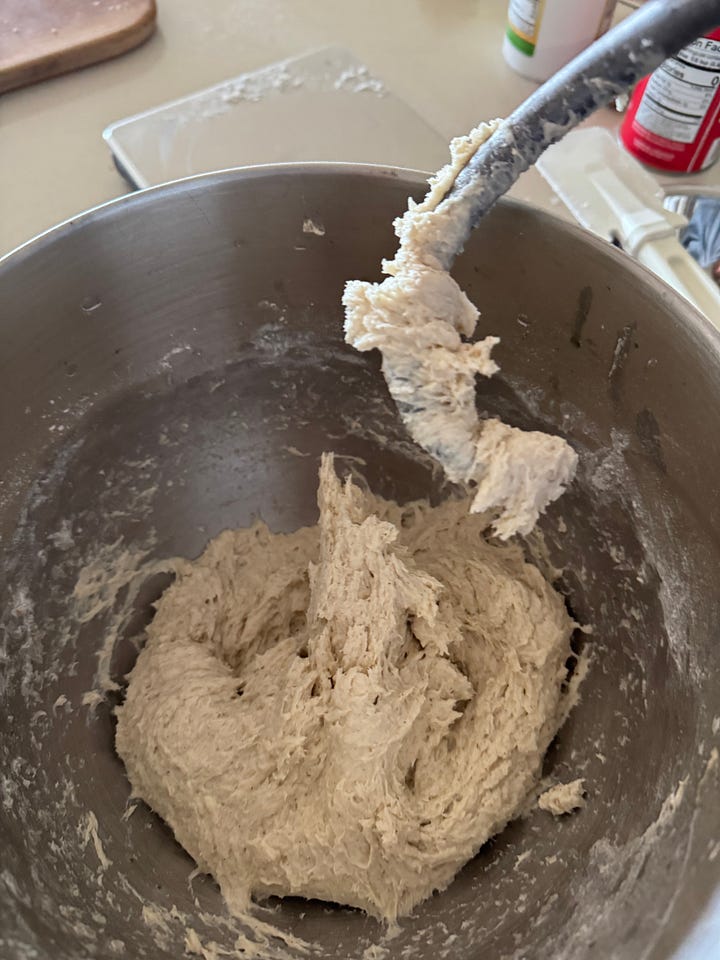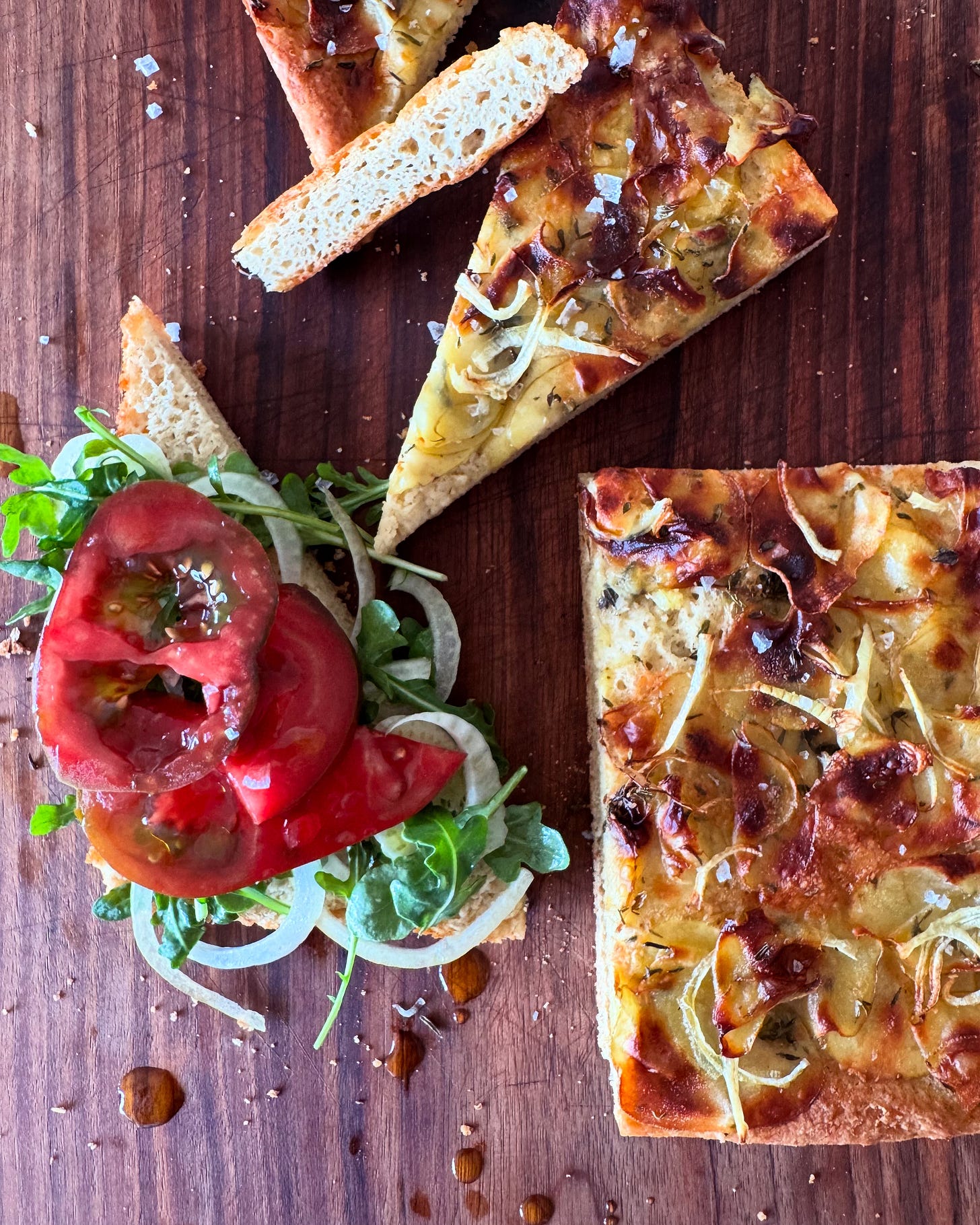Whole grain flatbread
Quick! Under two hours to make a flavorful millet and sorghum flatbread with a soft crumb and crisp crust—perfect to split for a sandwich
This flatbread has a crisp top and bottom crust with a soft, moist crumb, and is a wonderful bread for splitting and making into a sandwich, or cutting into wedges
Hello!
I love today’s recipe, and just used a fresh batch to make a breakfast BLT with some melted cheese, hot sauce, fried eggs, bacon, tomato, and arugula.
This flatbread is made with millet and sorghum for flavor and structure and has a crisp crust with a soft, moist crumb, and is wonderful as a sandwich base or for cutting into wedges to have with soup, salad, or as a nibble with cocktails. Also—I highly recommend the topping I made of waxy potatoes and onions sliced paper thin that were tossed with a little olive oil and seasoning; the smell while baking is heaven.
So many people have asked for a focaccia recipe—I’m obviously not the only one missing it. I’ve been working on it on and off for months with few encouraging results, which is why I’m making the distinction here from the get-go between flatbread and focaccia; it’s one of the few recipes that make me look wistfully at wheat-based counterparts I had to leave behind decades ago—the other of course being pizza dough.
There’s simply no comparison to the billowy, cloud-like results you get from yeasted wheat flour when the dough is in its final rise. Well, there’s one exception, which is using a flour from the Italian company Caputo. Their flour is made mostly from wheat starch along with buckwheat, guar gum, psyllium, and cornstarch, and it comes closest to the light, airy results we’re looking for in a true focaccia. However: the wheat starch could be problematic for some people, and obviously those with a wheat allergy should avoid it altogether.
I’m experimenting with a flour another company gave me to try, and I’ll report on the results.
Here’s an example of why I’m particular about recipe names and meeting expectations: I once judged a pie competition on the Food Network where one contestant made Key lime pie…without Key limes. They built up the judge’s expectations only to disappoint—fresh Key limes are such a wonderfully particular flavor—which was too bad because I think we were fine with plain lime pie. So too with flatbread/focaccia.
I love breaking down a recipe and looking at it with fresh eyes, so here are two steps that we can debunk: Because we’re not working with gluten, we can skip the bulk proof, and here’s why: wheat dough bulk proofs (aka first rise) primarily to develop gluten structure and dough extensibility (stretchiness). It’s also used to develop flavors, but that’s more for doughs that go through an overnight fermentation where the flavor would be more pronounced. Since there’s no gluten, we don’t need this step. It won’t hurt to do a bulk proof, but you’re not gaining anything.
Second: it’s not necessary to ‘dimple’ this dough with your fingers just before baking as one would for a big, puffy wheat focaccia because we want to maintain as much trapped air as possible! It’s structurally necessary for wheat dough that can billow so much that it will bake unevenly, but we don’t have that issue with non-gluten doughs that have fragile matrices.
These steps are easy, and you can be enjoying a flatbread within two hours of mixing, and if you don’t have a stand mixer, just mix by hand.
I tried the recipe with a higher ratio of plain GF flour as well as higher hydration, but in both cases it becomes gummy. The hydration on this dough is 125%; I tried more and less, but this seems to be the perfect amount.
As for substitutions, I have only made the recipe as written below, so it’s hard to say how other flours will perform.


Keep reading with a 7-day free trial
Subscribe to Have Your Cake to keep reading this post and get 7 days of free access to the full post archives.




